Loaded YoYos Anodizing by Jason Wong
by Chris Rhoads
October 9, 2011
Introduction
Anodizing in its simplest form is a way to protect metals, such as aluminum, by increasing the thickness of the oxide layer that naturally forms on the surface of the metal. It provides several practical uses such as corrosion resistance, wear resistance, prevent metal galling, and better adhesion for paints and glues. At its purest form, anodizing is a process, not an art… that is until you add the dyes, masks, and creativity that it takes to transform a scientific process into what we are seeing on many metal parts on the market today. We are now seeing dedicated companies like Gruntbull pop up that specialize in the cosmetic side of anodizing, giving new life to paintball guns, iPods, and more recently yo-yos. Not to be outdone by these larger scale operations, smaller homebrew anodizing shops have popped up to offer even more impressive techniques. These smaller shops, usually run by one person, have elevated the art form of anodizing to stratospheric heights. I have been lucky enough to know two of these amazing artists, Justin from Not Fail Anodizing and Jason from Loaded YoYos. Both have amazing skills and a unique vision for their craft. While this is a labor of love, anodizing is also a labor-intensive process. So much so that Justin has walked away for a bit and Jason has taken a hiatus from individual commission jobs, focusing more on working with companies on limited runs. Hopefully these two individuals will come back to the craft full time because they are simply amazing at what they do. As you will see in the gallery below Jason’s artwork is simply breathtaking.
Interview
Before we get tot the gallery, I took a moment to talk with Jason about his craft. I decided to include it here, it gives an interesting look into the art of anodizing.
1) Why did you decide to get into anodizing?
Despite all the yoyos I have anodized to date, my experience with anodizing only goes back to March 2011. So my experience in anodizing is around 6 months total. I’ve only been throwing for a handful of months prior to that. I guess, you could consider me quite a newbie both for anodizing and yoyos! I do pick up hobbies quickly though, especially those that are challenging, technical or have an artistic bent. Anodizing has all of this in spades. I remember purchasing my first few aluminum yoyos, the SPYY Pro and a CLYW Sebby Peak and being enamored with their finishes, textures and colors. I knew that anodizing was possible on a homebrew scale and after discovering Vendetta’s work on the forums, I thought that anodizing is something I would like to try. I really owe a lot to Vendetta for proving to people that high quality, creative anodizing on yoyos could be done by a homebrew anodizer.
2) What made you decide to try the “Skittles” splash ano?
I had actually conceived of the Skittles finish, early on in my experiments with anodizing, but only got around to trying it on the “Skittles Marmot” yoyo, which I finished on April 19, 2011. I call the technique I use for the Skittles finish, “Fade-Splash”. The concept is quite simple, rather than just a straight fade or a straight splash with solid colors, you combine the two techniques to do a multicolored splash. The colored splash can span any color range. For “Skittles”, it spans the whole rainbow. For “Inferno”, it goes only from Red to orange to yellow. I believe that “Skittles” and the other Fade Splash finishes like “Inferno”, “Fire in the Sky”, “Orcas Away”, etc. are original and unique and are the first yoyos to display Fade Splash techniques. While I suppose one day, Fade-Splash will be an imitated technique amongst other manufacturers and anodizers, I hope that the community remembers Skittles and the other Fade Splash finishes as the pioneers to this new look.
3) Is the “Skittles” ano as hard as it looks?
Definitely. Skittles is a hard ano. It’s hard because it has several different components. If you think about it, a full Skittles finish is more than a single ano job. It is several color fades, a splash and then a final solid color. I can comfortably say that Skittles is at least 4 or 5 basic ano jobs in one. Some of the steps are very complicated, specifically getting the full range of rainbow colors faded as cleanly as possible. I also pay a lot of attention to splash pattern and splash density. It’s one thing to just slap masking on a yoyo and call it splash. It’s another to do it in a visually appealing and interesting way. Finally, you have to remember, that with anodizing, you cannot touch anything to the yoyo. You can’t hold it, you can’t drop it, you shouldn’t even wash it in tap water. Each step in Skittles involves a lot of handling and it is incredibly easy to accidentally bump, drop, rub or brush the anodized yoyo halves in the middle of a job. If you’re lucky, you can work around the spot you touched… but if you’re unlucky, you will have an ugly flaw. As a boutique anodizer and OCD perfectionist, I am very very picky about flaws. Unless a flaw is incredibly minor (i.e.: most people would not call it a flaw), I will scrap the whole thing, strip the yoyo and redo it. Most people don’t realize the high degree of risk and low margin for error with anodizing. One need only consider the large numbers of B-grades, NQP, Flaw to Loves, BadApples, etc. that major manufacturers sell at discounted prices due to ano flaws for proof that even in highly commercial facilities, flaws are a fact of life.
4) Do you strip ano as well? If so what problems have you encountered with stripping a yo-yo and reanodizing it?
I do strip my own yoyos and use a combination of chemical and mechanical techniques to do this. I have probably stripped over 50 yoyos and so far have not encountered any problems with any of the yoyos that I have stripped and reanodized. I do, however, try to keep stripping to a minimum and never strip a yoyo more than twice, unless it’s a beater that I am specifically using to test new ano processes with.
5) You recently started anodizing Titanium. The progress you have made in such a short period of time is amazing. How did you come up with the Rainboflage approach?
Thank you! I’ve wanted to do titanium anodizing for a while, but found it challenging due to the need for different supplies and a scarcity of adequate ‘palettes’ to practice on. Titanium yoyos aren’t exactly cheap or common! Thankfully, with the help of a few community members, and an ungodly amount of research, I was able to get some practice down and quickly master a few colorways, which I am quite happy with. Rainbouflage in particular is a stunning colorway. I derived some of my inspiration for Rainbouflage from other titanium artists who produce art on ti bicylces, flashlights, knives, paintings, sculpture, etc. I also spent some time talking to a few titanium experts to help me through a few of the tougher challenges I was encountering. It was only a couple months ago that I completed my first titanium ano job, so I foresee lots of interesting effects, colors and techniques in the future as I learn more. I still offer commissioned ano jobs on titanium because I find it interesting and fun to do.
6) Are you working on any new techniques that you would like to share with us. New things that will blow our minds?
Well, I am working on new things… whether or not they will blow your minds remains to be seen. On the aluminum front, I have been dabbling here and there with the elusive swirl ano technique. This is a closely guarded industry trade secret and unfortunately, I don’t know it, so I am forced to figure it out on my own through experimentation. I already understand the basics about how to do it, but I am not sure whether I have sourced the exact supplies required or mastered its execution. I can create swirl ano pieces… but they look terrible. Also on the aluminum front, you’ll be seeing more creative stencil work. Stencils are lots of fun and add tons of character to a yoyo, but they are also incredibly risky and difficult to apply. One unsteady hand and the whole job is botched. That said, I have gotten pretty good at laying stencils, so you will likely see more of that from me.
On the Ti side, I am going to be working more on masking and stencils as well as some other finer techniques like hand painting. It will be a short while before I master these techniques well enough to share them, but keep your eyes open!
Gallery
This gallery is a small sample of the work put out by Loaded YoYos. Some are the work of just Jason while others are collaborations with Nick from AngelDusts and Josh from GalaxyBlasts who both have unique techniques for applying a gorgeous bead blast surface. Finally, some of these yo-yos are representative of Jason’s ability to make a manufacturer’s colorway concept to life. Each set of pictures will be labeled with the collaborators who worked on it or the manufacturer who requested it.
1. 20,000 Leagues – Turning Point Positron (AngelDusted, tester for VsNYYC colorway request)
2. Cupcake Sprinkles – Crucial Confection
3. Silver Skittles – CLYW Peak (GalaxyBlasted)
4. Fire In The Sky – SPYY Punchline
5. Skittles – General Yo Essence
6. Sunshine – CLYW Bassalope
7. Rainboflague – One Drop Sovereign
8. Rainbow Fade – Northern Spin Co. Aurora (Don’t ask about the spikes)
9. Inferno – VsNYYC Moonwalker (Requested by VsNYYC)
10. Orcas Away – VsNYYC Moonwalker (Requested by VsNYYC)

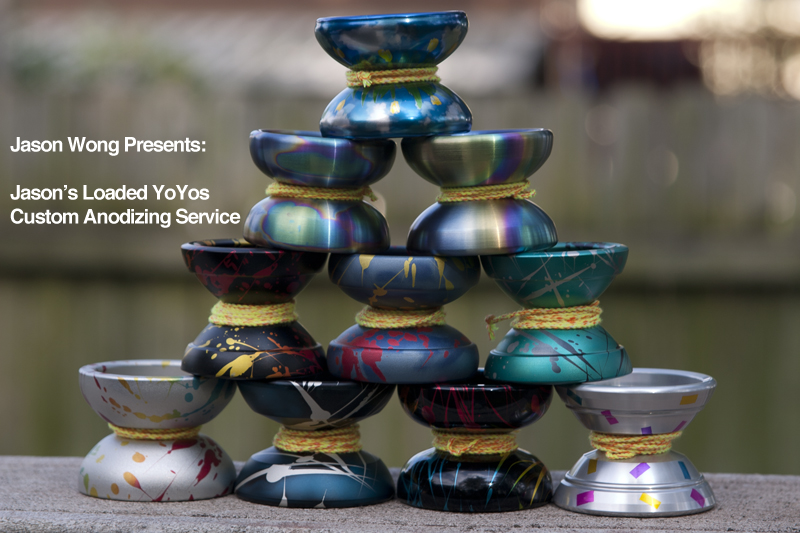
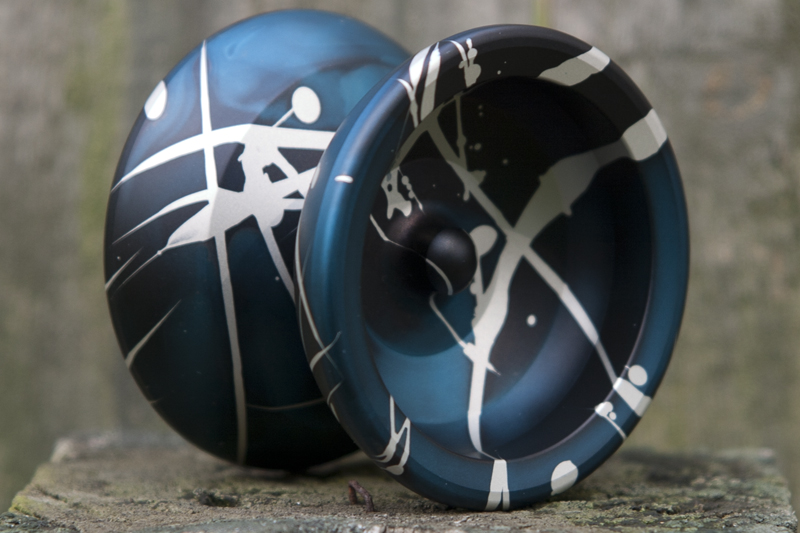
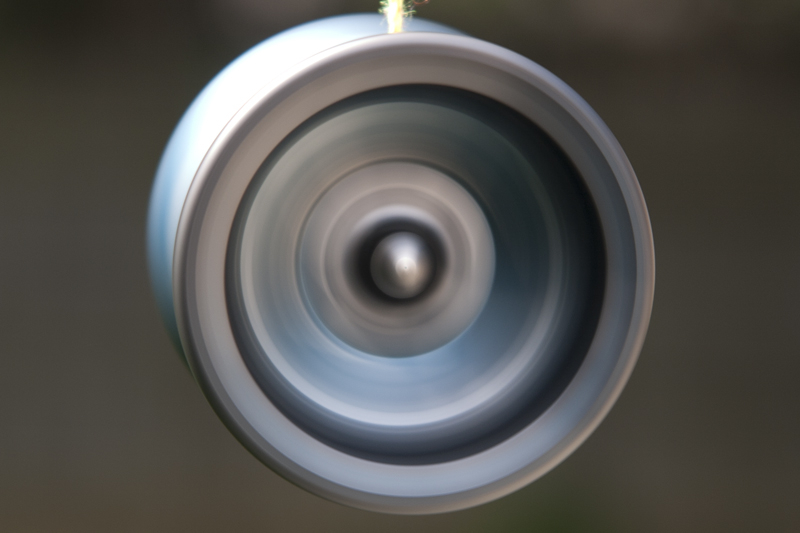
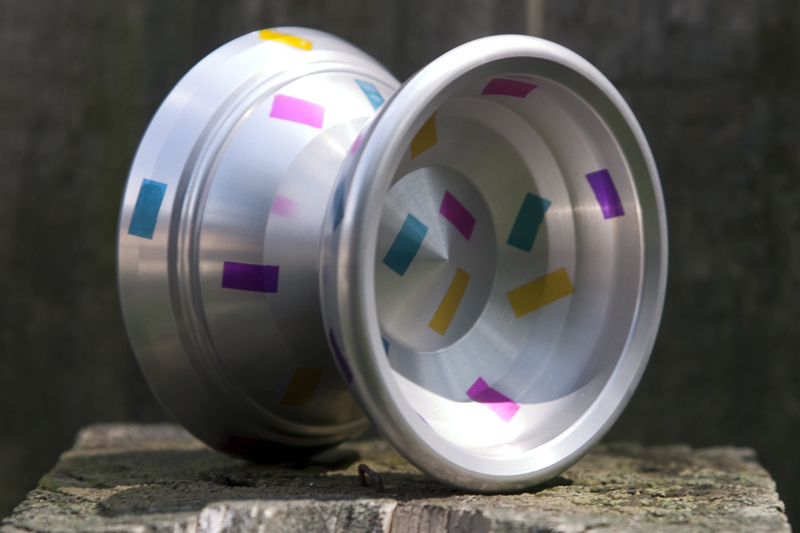
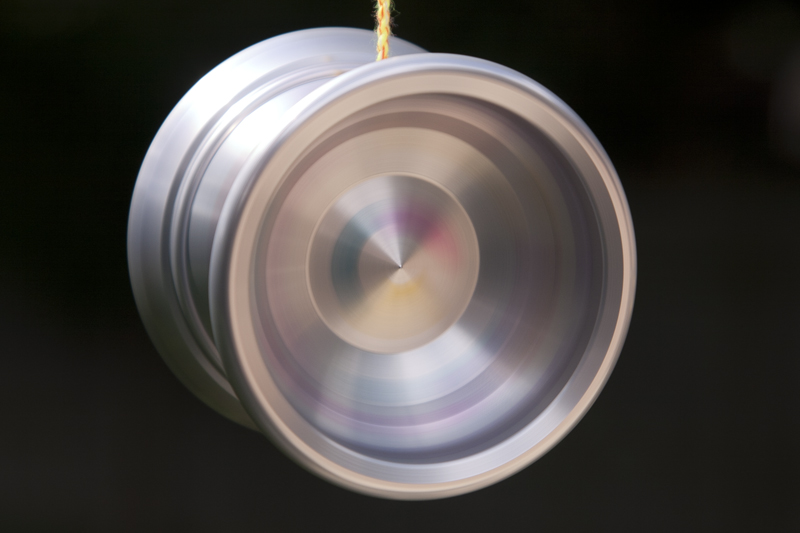
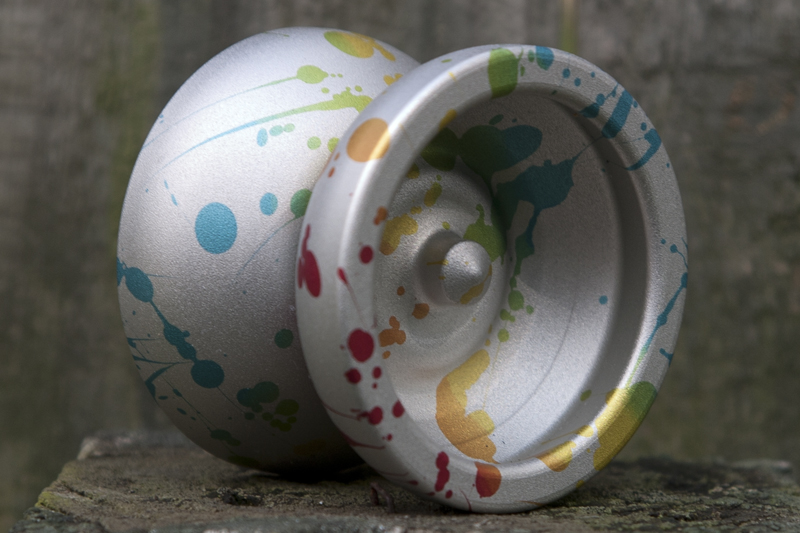
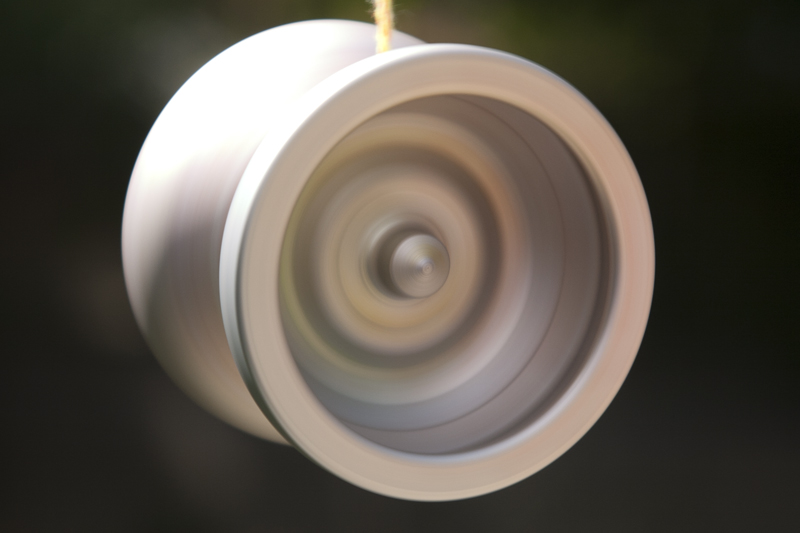
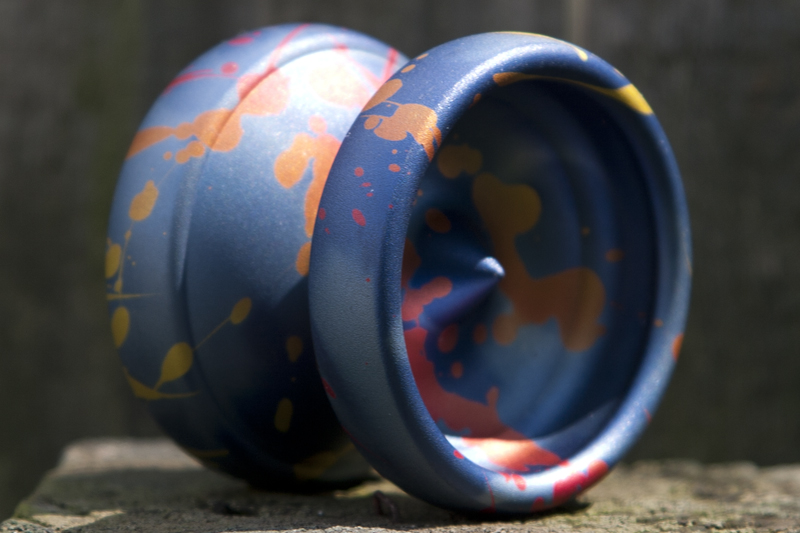
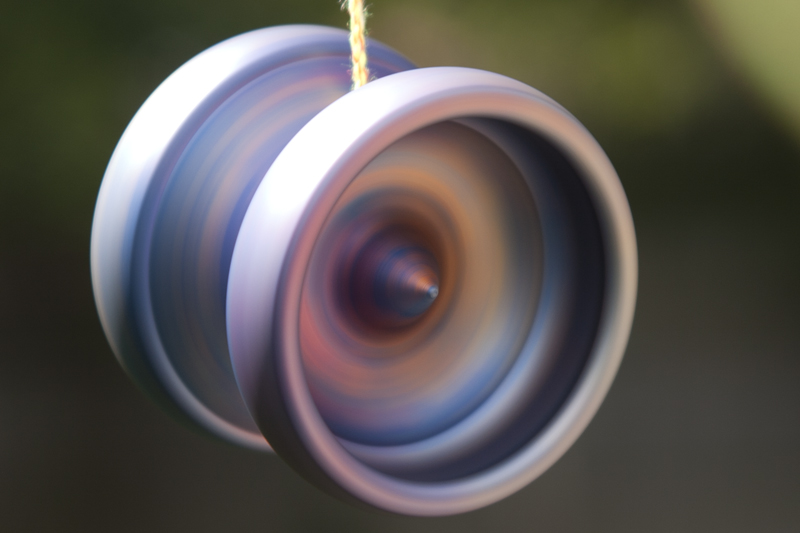
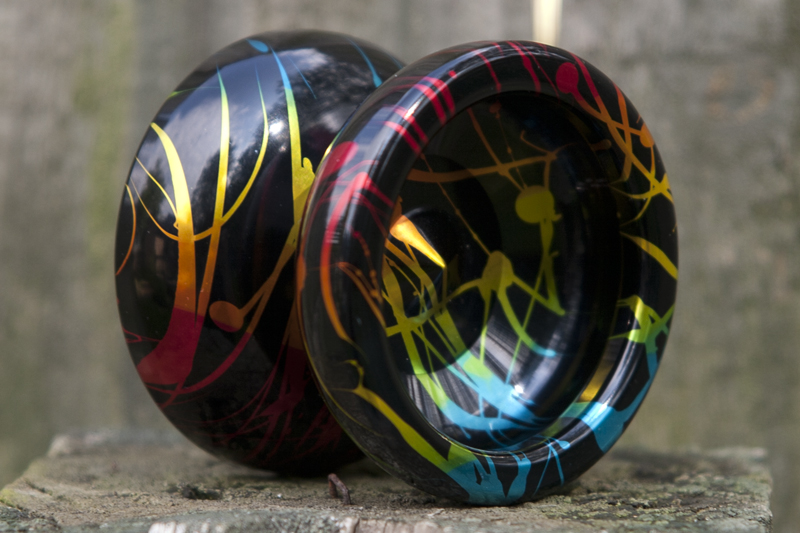
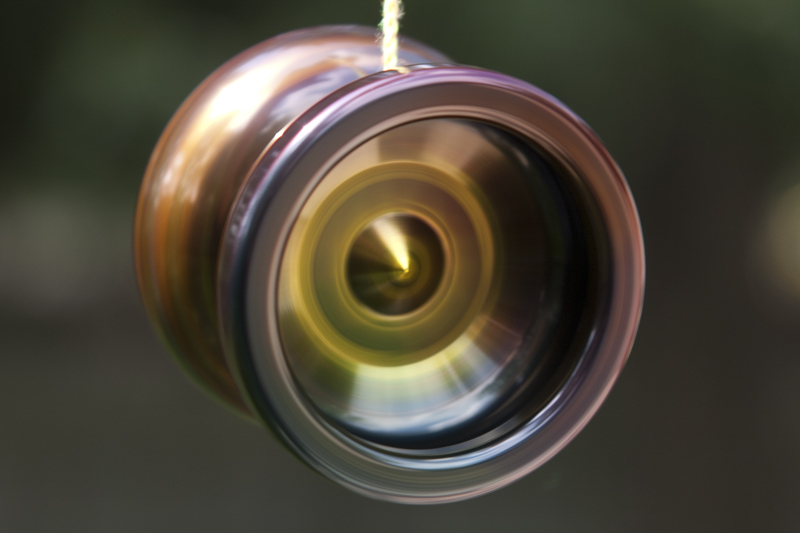
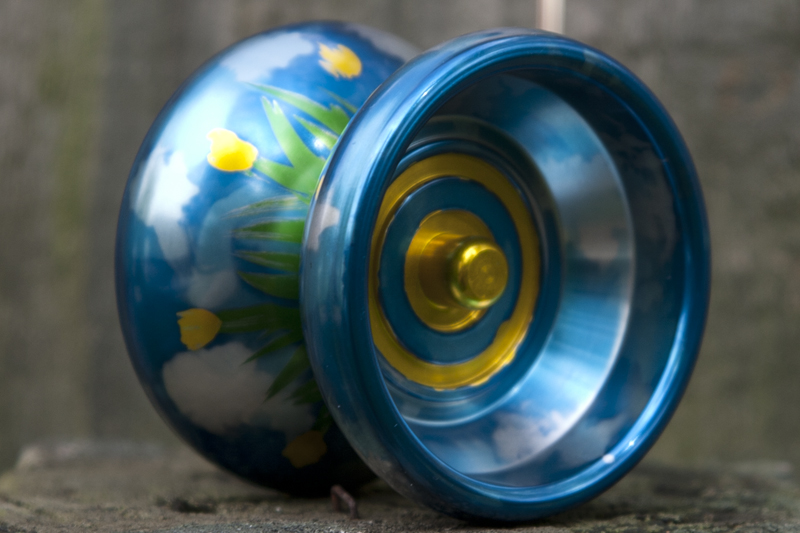
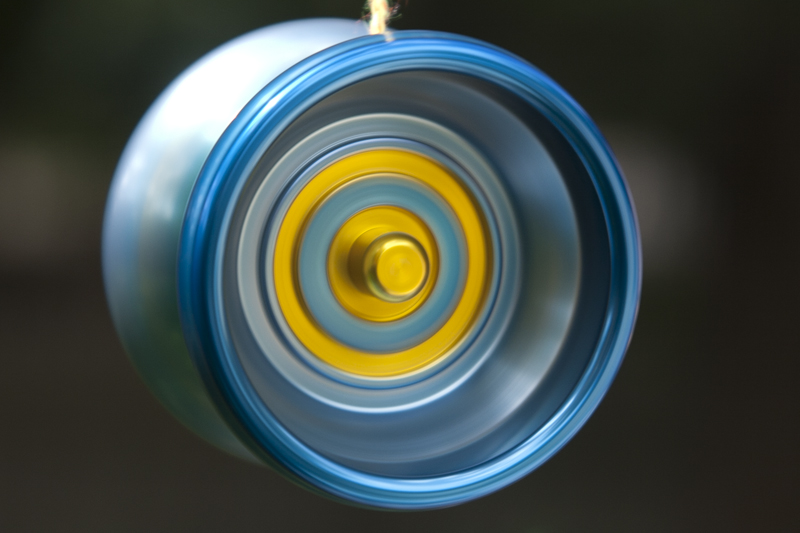
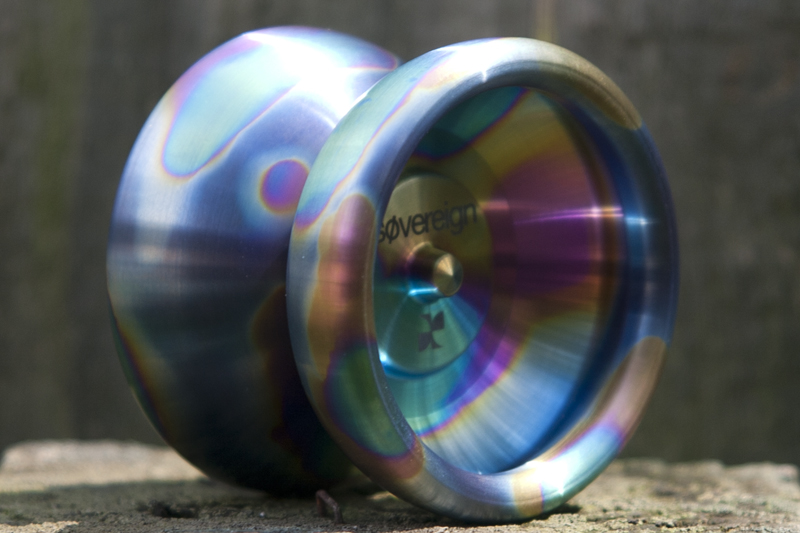
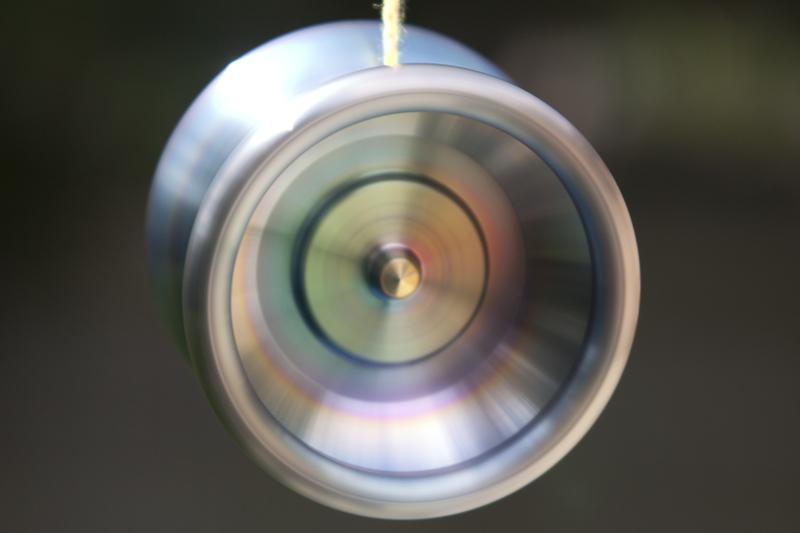
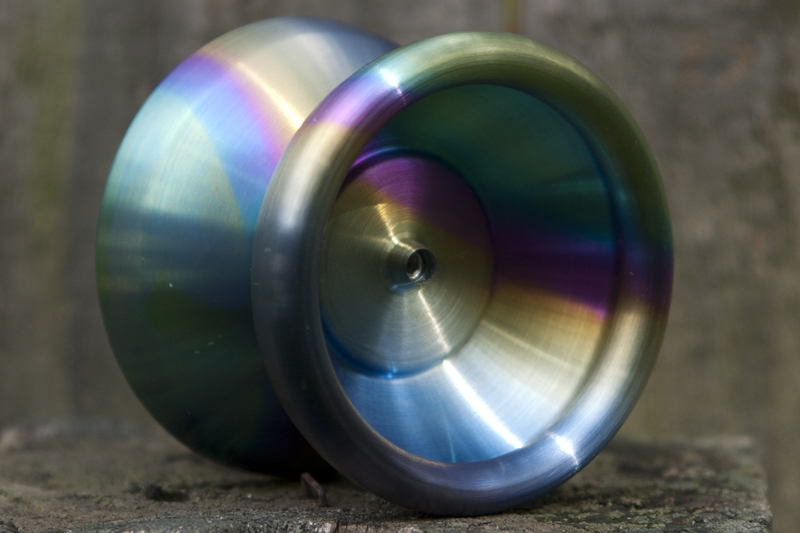
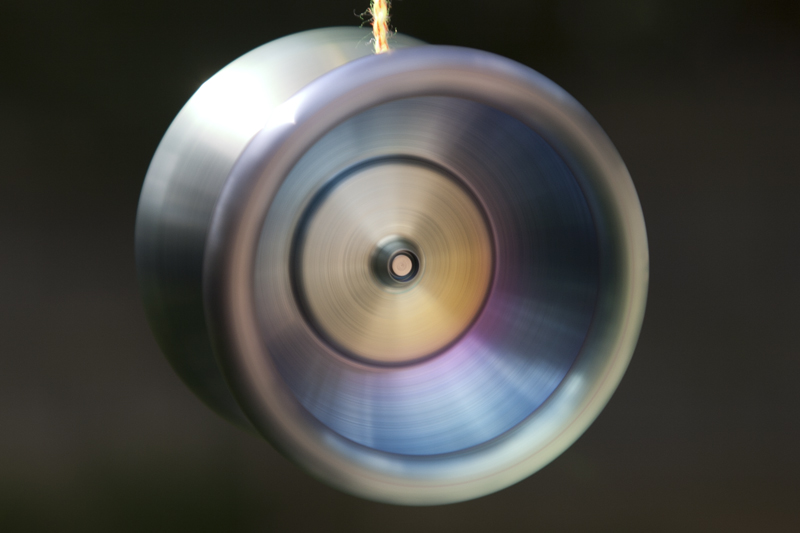
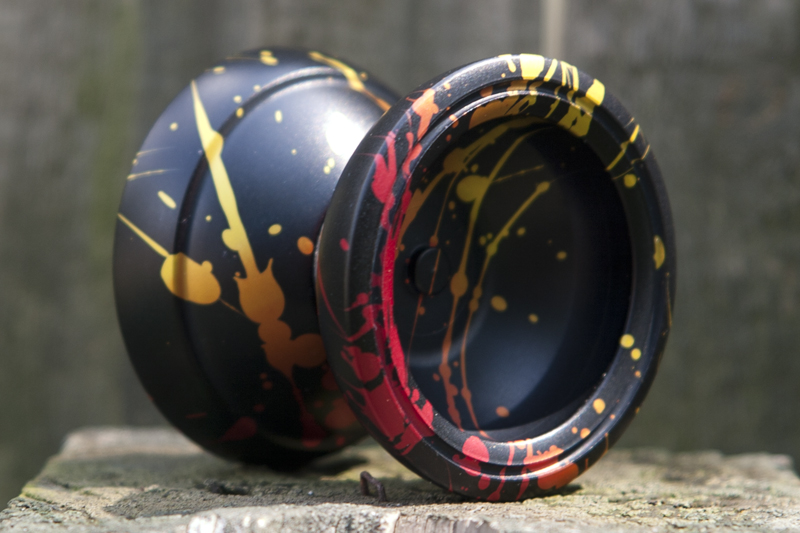
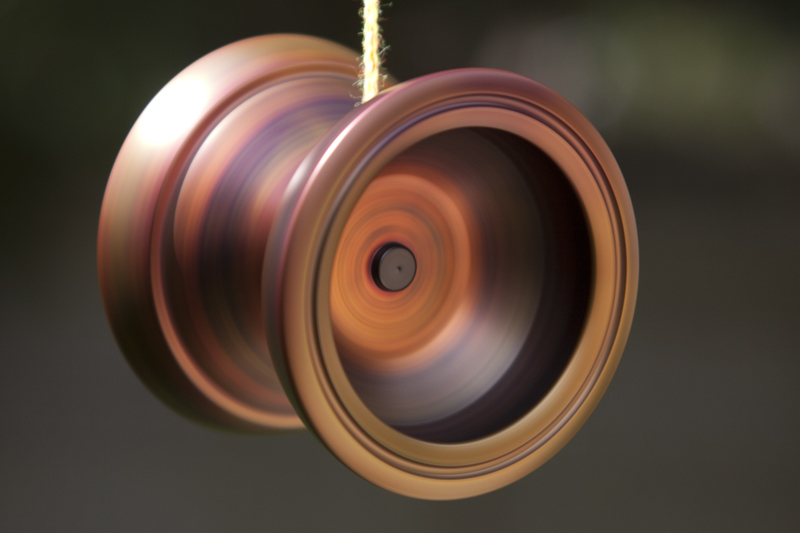
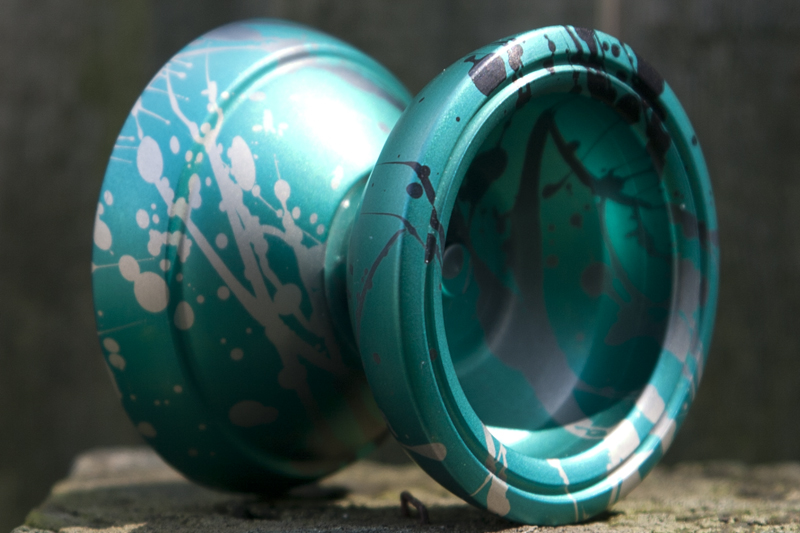
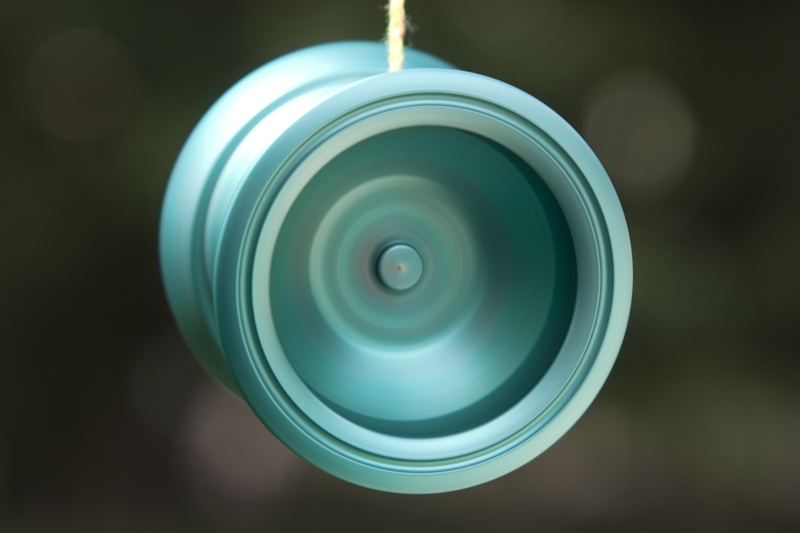
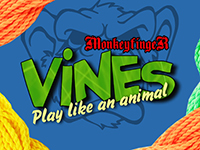
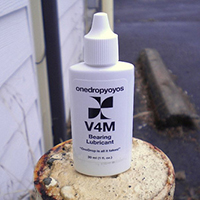
#1 by hanah on October 9, 2011 - 2:44 pm
Quote
do you anodize yoyofactory jks
#2 by Chris on October 9, 2011 - 2:49 pm
Quote
I don’t know if Jason anodized any for YYF, you would have to ask him. If you are asking if he would anodize one for you then the answer is probably no, he is not taking commissions at the moment.
Any questions can be directed to him on the YYN forums, his user name is “jasonwongzero”
#3 by hanah on October 9, 2011 - 2:52 pm
Quote
ok thanks. do you know anybody who will???
#4 by hannah on October 9, 2011 - 3:04 pm
Quote
like other people who are good anodizers????????
#5 by Chris on October 9, 2011 - 7:48 pm
Quote
I do not at this time. Anodizing is very labor intensive. Most of the mom and pop operations go through phases of needing a break, that is where Justin and Jason are and they would be two of the absolute best in the industry in my opinion. The only place I know of that is accepting orders is Gruntbull but you will not get the level of detail that is offered by the smaller anodizers.
#6 by hannah on October 9, 2011 - 8:26 pm
Quote
ok thanks
#7 by Jason on October 10, 2011 - 12:46 am
Quote
Thanks Chris for the gracious write up! For those asking, at the moment, I am taking a break from doing commissioned jobs (i.e.: anodizing other people’s yoyos).
However, I have about 30+ raw yoyos in my collection that are waiting to be anodized. Some of these will go into my collection, but most will be sold online, so keep your eyes open!
Thanks everyone for the support and appreciation so far!
#8 by Christian on October 12, 2011 - 4:07 am
Quote
Wow, these throws are looking great. I especially like the inferno and the skittles ano, the spinning pics are really amazing!
#9 by Dao Tran on October 13, 2011 - 8:42 pm
Quote
how does the positron turn silver, when it’s mostly blue?
and I would pay sooo much for the Orcas Away Moon Walker, I love it.
#10 by Tickles on November 4, 2011 - 11:41 pm
Quote
The 20,000 leagues colorway might be the coolest ano I have ever seen.
#11 by Todd on February 3, 2012 - 1:20 pm
Quote
Wow – A Loaded YoYo ano’d Capt. America Chief just sold on ebay for over $600 !
#12 by Peter on March 31, 2012 - 3:42 pm
Quote
multi colored anodizing
#13 by Miss Alice on June 18, 2012 - 6:45 pm
Quote
Hi (for those who are looking to get a yoyo anodized),
I also anodize! Check out my work at:
http://www.yoyonation.com/talk/index.php/topic,100011.0.html
(Username: Spottedbanana)
Feel free to PM me if you have any questions.
Thanks~
#14 by Bhargav on September 17, 2015 - 8:20 am
Quote
I completely agree.